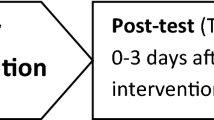Abstract
In 2009 the Finnish Ministry of Education and Culture assigned the National Board of Education with the task of carrying out a nationwide evaluation of all seven cross-curricular themes. The evaluation is one of the largest education evaluation projects the National Board of Finland has ever organised. The present authors were invited to evaluate the theme “Human Being and Technology”. Data were collected during fall 2010 with ninth-grade pupils (the last grade in Basic School) around Finland answering the questionnaires. The questionnaire was completed by 1,181 (both Finnish and Swedish speaking) grade-nine pupils. The main focuses of the study are: (1) pupils’ knowledge about technology, (2) pupils’ attitudes towards technology, and (3) pupils’ activity know-how of technology. It seems that the development of technological ideas has not been implemented at all in HBT cross-curricular teaching, even though this particular section of the cross-curricular theme could have introduced something new and concrete that would steer pupils towards innovativeness and creativity. Paying more attention to this aim would better link visual art and craft education to this cross-curricular theme, particularly since it is only in visual arts and craft studies that learning of innovation processes is given as one of the learning objectives. It is particularly the contents of craft education that refer to the learning of a technological innovation process. The attitudes of youth towards technology and the development of technology were in line with the objectives of the national framework curriculum, yet the wide-ranging utilization and application of technology, let alone the further development of technology, has not been made possible, neither in this particular cross-curricular theme nor in school routines. A positive observation, however, was that the majority of young people understood the connection between technology and manual skills.









Similar content being viewed by others
References
Dakers, J. R., & Dow, W. (2009). Understanding & providing a developmental approach to technology education—A handbook for teachers. Faculty of Education, University of Glasgow.
Dugger, W. (2010). The status of technology education in the United States, 2010. In A. Rasinen, & T. Rissanen (Eds.), In the spirit of Uno Cygnaeus—Pedagogical questions of today and tomorrow. University of Jyväskylä, Department of Teacher Education.
Feldman, R. S. (1993). Understanding psychology (3rd ed.). New York, NY: McGraw-Hill.
Järvinen, E.-M. (2006). Teknologian opetus ja luovuus. [Teaching technology and creativity] In M.-L. Visanti, H. Järnefelt, P. Bäckman, & P. Sinko (Eds.), Luovuus Pedagogiikka. [Creativity Pedagogy] Opetushallitus. Helsinki.
Korkeakoski, E., & Siekkinen, T. (Eds.) (2010). Esi- ja perusopetuksen opetussuunnitelmajärjestelmän toimivuus. Puheenvuoroja sekä arviointi- ja tutkimustuloksia. [Functionality of the curriculum system in preschool and basic school]. Addresses and evaluation and research results Koulutuksen arviointineuvoston julkaisuja 53.out.
Layton, D. (1993). Technology’s challenge to science education. Buckingham: Open University Press.u j a5 2.
McCormick, R. (1997). Conceptual and procedural knowledge. International Journal of Technology and Design Education, 14, 1.
Opetushallitus [National Board of Education]. (2004). Perusopetuksen Opetussuunnitelman perusteet [National Framework Curriculum]. Vammala 2004.
Parikka, M. (2010). Ennakkokäsitykset sähköopin perusteiden oppimisessa. [Preconceptualizations in learning the basics of electricity] Matemaattis-luonnontieteellinen aikakauslehti Dimensio 2/2010.
Pirttimaa, M. (2008). Sähkö ja elektroniikka peruskoulun teknisen työn opetuksessa: tapaustutkimus 7. luokan oppilaiden sähköön ja elektroniikkaan liittyvästä osaamisesta ja käsityksistä. [Electricity and electronics in technical craft teaching in the basic school: case study of 7th-grade pupils’ abilities and concepts related to electricity and electronics.] Tampereen yliopisto. Kasvatustieteiden tiedekunta.
Rasinen, A. (2000). Developing technology education. In Search of curriculum elements for finnish general education schools. Jyväskylä Studies in Education, Psychology and Social Research. Jyväskylä, Finland: University of Jyväskylä.
Rasinen, A., Ikonen, P., & Rissanen, T. (2008). From craft education towards technology education: The Finnish experience. Education transactions, series A: The Curriculum (pp. 21–35). School of Education, Bangor University. ISBN: 9781842291022.
Rasinen, A., Virtanen, S., Endepohls-Ulpe, M., Ikonen, P., Ebach, J., & Stahl-von Zabern, J. (2009). Technology education for children in primary schools in Finland and Germany: Different school systems, similar problems and how to overcome them. International Journal of Technology and Design Education, 19, 368–379.
Segregaation lieventämistyöryhmän loppuraportti. (2010). Final report of the committee on alleviation of segregation. Opetus- ja kulttuuriministeriön työryhmämuistioita ja selvityksiä 2010:1. Opetus—ja kulttuuriministeriö. Helsinki: Helsinki University Press.
Sulonen, K., Heilä-Ylikallio, R., Junttila, N., Kola-Torvinen, P., Laine, T., Ropo E., et al. (2010). Esi- ja perusopetuksen opetussuunnitelmajärjestelmän toimivuus. Functionality of the curriculum system in preschool and basic school. Koulutuksen arviointineuvoston julkaisuja 52.
Twyford, J., & Järvinen, E.-M. (2000). The Formation of children’s technological concepts: A study of what it means to do technology from a child’s perspective. Journal of Technology Education, 12, 1.
UPDATE (Understanding and Providing a Developmental Approach to Technology Education). (2010). Final activity report. University of Jyväskylä, Finland. http://update.jyu.fi/images/b/b7/UPDATE_042941_Final_report_D8.3.pdf.
Vaara, H. (2008). Perusasteen 3.-6.luokkalaisten käsityksiä sähköstä yksinkertaisissa virtapiireissä: teknologiakasvatuksellinen näkökulma. Basic school 3rd-6th graders’ conceptions of electricity in simple electric circuits. Oulun yliopisto: kasvatustieteiden ja opettajankoulutuksen yksikkö.
Virtanen, S. (2011). Searching for ways to encourage girls to study technology in primary education. In Stables, Benson deVries (Eds.), Perspectives on Learning in Design and Technology Education, PATT, 25/Cript 8.
Internet references
www.iteea.org/Conference/pattproceedings.htm. Accessed 28 May 2013.
http://www.oph.fi/english/education/overview_of_the_education_system. Accessed 28 May 2013.
Author information
Authors and Affiliations
Corresponding author
Rights and permissions
About this article
Cite this article
Järvinen, EM., Rasinen, A. Implementing technology education in Finnish general education schools: studying the cross-curricular theme ‘Human being and technology’. Int J Technol Des Educ 25, 67–84 (2015). https://doi.org/10.1007/s10798-014-9270-3
Accepted:
Published:
Issue Date:
DOI: https://doi.org/10.1007/s10798-014-9270-3




